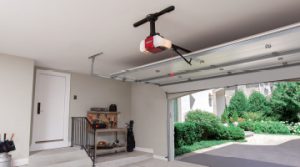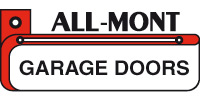
It is not unreasonable to think that when we use our garage door opener the door should open and close properly. This is what typically happens day after day, as we use the garage door as our home’s main point of entry. It’s common practice even for our kids, once they arrive home from school or soccer practice, to use the garage door’s exterior keypad to get into the house.
If it sounds like we take entry via the garage door for granted, it’s because we do. Often we take our safety for granted as well, because this very heavy moving object is something that we very rarely check to ensure that it’s working the way that it should.
We really should check out our garage door at least once every six months to make sure that it is operating properly and safely. If you’re not doing that, you should start. There are four basic steps.
Step 1: Take a look
- Go to the back wall of the garage, and then move forward, checking to see that the door’s horizontal tracks are properly aligned. They should be parallel, and not leaning inward. If they are leaning, that’s a problem. You should also look to make sure that the tracks are anchored properly – that the bolts that hold them to the supports are not loose.
- Next, examine the door hinges to be sure that the screws are all properly tightened. Take a look at the rollers as well – they should exhibit no wear, and roll smoothly in their tracks. Sliding rollers can be dangerous.
Step 2: Disconnect the door opener
- Locate the emergency release cord (it is usually red). Hold it in your hand, and move toward the back of the garage. This will disconnect it from the garage door opener.
- Use the handle to lift the door manually. The door should not feel heavy – imagine picking up a 10‑pound bag of potatoes; you know how that feels, and the door should feel no heavier. If it does feel heavy, then that means that there is a problem.
- Keep in mind that you use your automatic garage door opener to substitute for human strength. Your garage door could weigh 250 or more pounds. So, if the opener does not work properly, the door could come down very heavily on you. What this means is that you could get hurt if you try to fix the problem yourself, so don’t do it. Call us instead, and we’ll take care of the problem for you.
Step 3: Check the reversal
- Your garage door should reverse automatically if it encounters and object. To check that it is reversing properly, hook up the opener again, and when it clicks in place, use it to open the garage door.
- If your garage door opener was made after 1986, then it will be equipped with both a mechanical and a photoelectric safety system. If it was made before 1986, then it will just have a mechanical system.
- You test the mechanical system by:
- utting a 2×4 or other sizable piece of wood at the point where the door meets the garage floor;
- using the remote to close the door;
- seeing whether the door goes back up when it touches the wood;
- making adjustments to the control button if the door fails to touch the wood.
- You test the photoelectric system by:
- Look at the base of your garage door’s opening. About four to five inches (10 to 15 centimeters) above the floor on each side, you should see a photoelectric unit.
- Stand near the door and press the remote to close it.
- As the door starts to close, pass a foot in front of one of the photoelectric units. This should interrupt the invisible light beam between them.
- The door should come to a stop for a split second, and then it should reverse open again.
- Note that a misaligned photoelectric unit can result in a malfunctioning door opener. If your door opener isn’t working, inspect these units for proper alignment and/or cut wires.
Step 4: Lubricate
- Chain driven door openers require the following maintenance :
- lubrication using a petroleum‑based lubricant;
- wiping away leftover lubricant;
- using oil or white grease on the motor’s gear and sprocket assembly;
- lubricating the far end of the trolley with oil or white grease.
- If your opener is belt-driven and metal‑reinforced, you do not need to lubricate it.
Watch your kids
Kids love to play with things that move, but they should not be playing with your garage door opener. Only let them open and close the garage door if you are there to supervise. The control panel that regulates the door should ideally be located about five feet off the ground, well out of the reach of curious kids, and should under no circumstances be used by kids who aren’t old enough to let themselves in and out of the house without adult assistance.
You should also keep your kids away from the garage door when you are opening or closing it. As well, older children should be told not to give the four-digit access code to anyone without your permission – the last thing you need is to have the whole neighbourhood knowing how to get into your house by way of the garage.
Accidents Can Happen
While probably not all that common, accidents can happen when using a garage door opener. Like most accidents, though, they are preventable. When your kids are old enough, they can learn how to use a garage door opener safely by watching this video. It covers the basic safety rules. You can also take a look at www.garagedoorcare.com to learn the safe operation of garage doors.
If you need a garage door, accessories, or a maintenance call, get in touch with us at 519-942-1956. You can also Click here to get your free quote. Building or renovating? We are here to help! Just click here to find out how to design an awesome garage door!







Add new comment